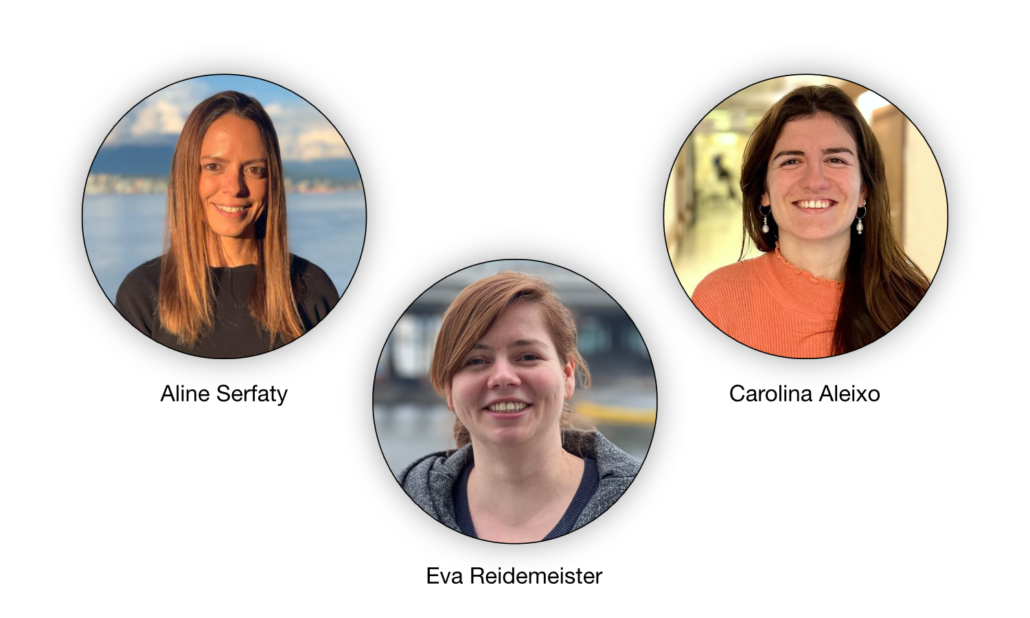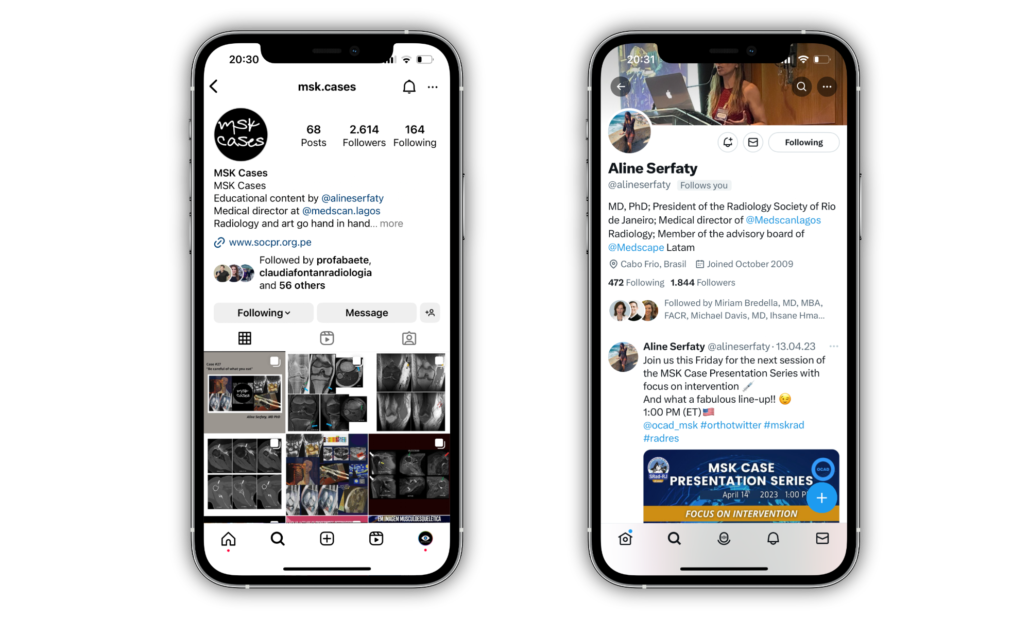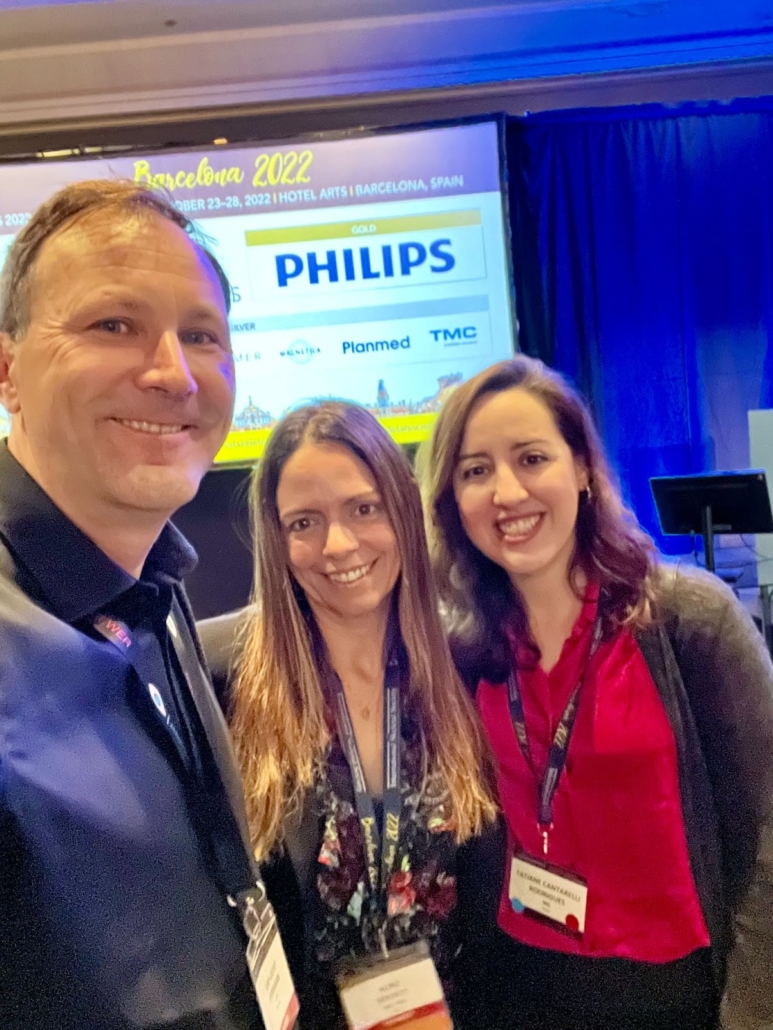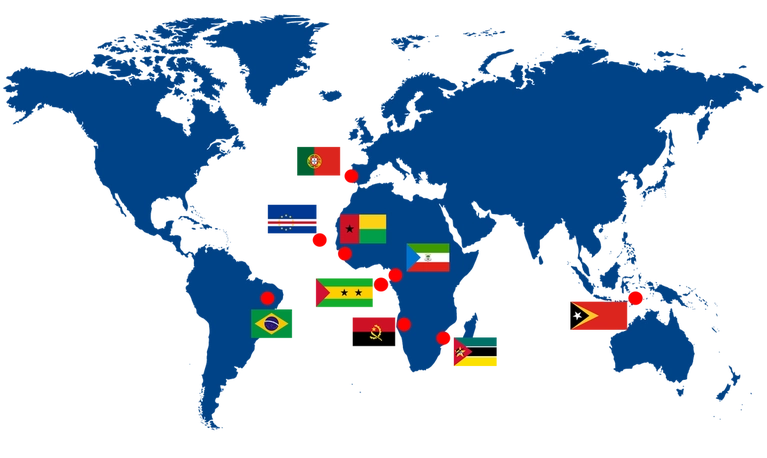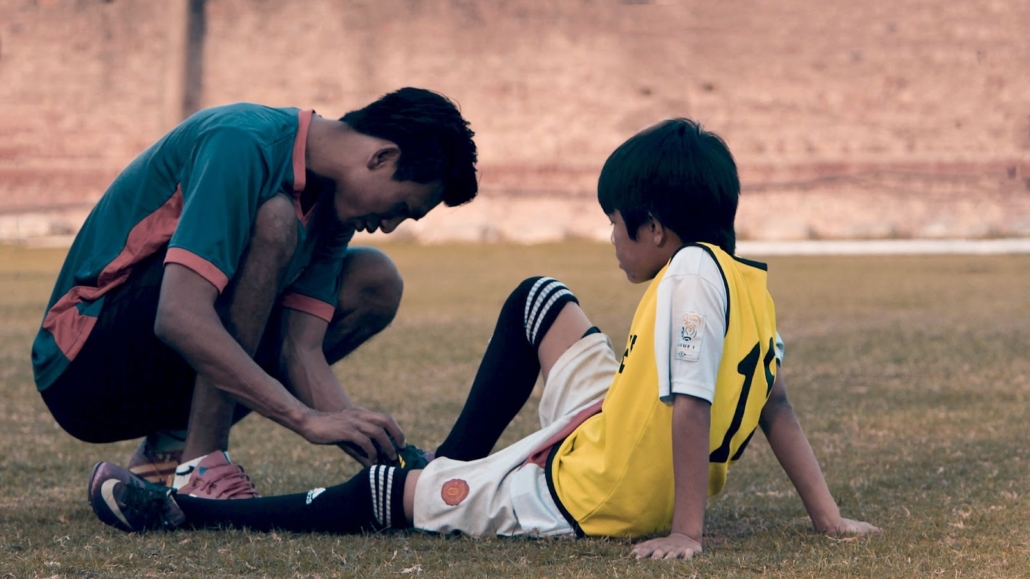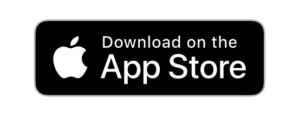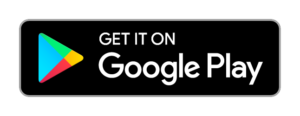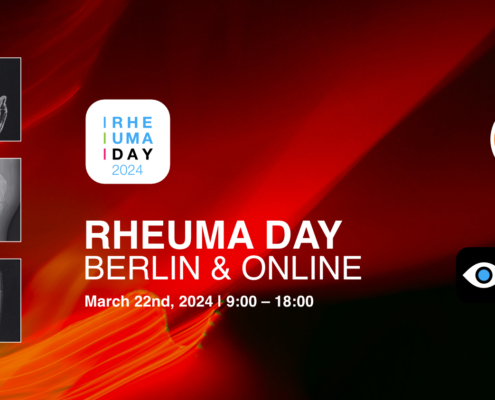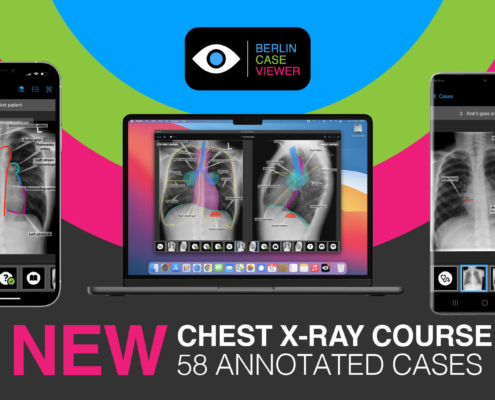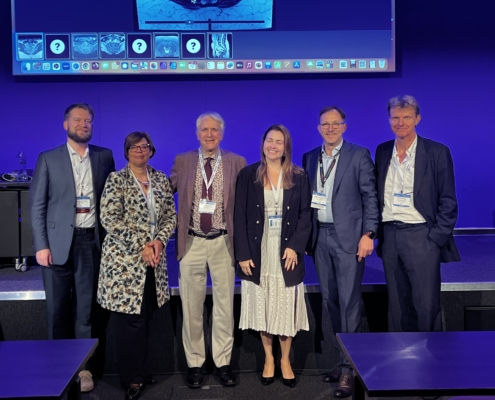Translating and Creating the Brazil Module for BerlinCaseViewer — Carolina Aleixo & Aline Serfaty in Interview
Introduction to the topic: Our app has a multilingual setup, because we are convinced that it is a lot easier to acquire new know-how in one’s own language. For radiology resident Carolina Aleixo and radiologist Aline Serfaty, Portuguese is their mother tongue. With the freelance editor Eva Reidemeister, they have talked about translating and creating the Brazil Module for BerlinCaseViewer.
About interviewees:
Carolina Aleixo is a radiology resident at Charité — Berlin University of Medicine, originally from Portugal.
Aline Serfaty is a radiologist, specializing in musculoskeletal and diagnostic imaging, from Brazil. She is the medical director at Medscanlagos and has been the President of the Radiology Society of Rio de Janeiro until 2022.
Eva: I guess it is best to just introduce both of you first. So I’d say, I know that’s always a bit difficult, but why don’t you talk both a bit about your professional experience, and how you both came into radiology. What was it that excited you most about it? Who wants to start first?
Aline: Carolina, you can go. Go ahead. I’m curious.
Carolina: Ok, I’ll start. So, my name is Carolina. I am originally from Portugal, but I grew up bilingually. So I speak Portuguese and German as my mother tongues. And I am now living in Berlin. I am a resident of radiology in my first year of my specialization. And I have been very excited about radiology in the last years of my medical studies.
Radiology is a part of many other subjects in the hospital, and it’s crucial for many other subjects. So that all already interested me a lot, because it’s a very multidisciplinary field, and you can cooperate with colleagues from many other areas. That I find very interesting.
I also like the fact that you are never bored in radiology. You can have so many different areas that you can subspecialize in, and you can really have a bit of everything if you wish to. I started writing my thesis in Berlin at the Charité, and that’s also how I got to know Kay or Professor Herman, and well, that’s exactly how our cooperation with the translation of the app started.
Eva: Yeah, that would’ve been my next question, basically how that came into being.
Let’s switch to Aline. Maybe you tell a bit about yourself and, what interested you most about radiology and how you got into that field and about your experience.
Aline: I’m a practicing MSK radiologist and medical director at Medscanlagos, a clinic located in the state of Rio de Janeiro, Brazil. And here we have — it’s a big clinic — we have six MRIs, and all the other diagnostic modalities just assist the local community. I graduated with a degree in medicine from the Federal University of the state of Rio de Janeiro in 1996 — yes, I’m that old — a medical residency in radiology many years ago, too, and a PhD at the Federal University of Rio de Janeiro in 2021, a few years ago.
In 2020, when the pandemic hit the world, I was in New York City as a research fellow at New York University — with my three kids, I am a mother of twins and the youngest, all boys.
So we were there. I was a research fellow at the university, and the pandemic came, but I managed to end up doing what I was supposed to do. And I collaborated in a project regarding the likelihood of hip infection with image-guided hip aspiration dry tap, and it was a 10-year retrospective study. This was my second time outside my country.
The first time was back in 2006 when I went to Paris for an internship at Hôpital Saint Antoine. This is pretty much my background. I really enjoy being a radiologist, you also asked me that, because it gives me the opportunity for an exciting and varied career in clinical medicine, teaching and research.
And it also offers flexibility and control over where and when I work, making it possible to achieve a healthy work-life balance. And most of all, it is also a fulfilling career for those who enjoy helping others and are interested in using advanced medical technologies.
Eva: That’s great. Since Carolina already spoke about it, how did you actually come on board the BerlinCaseViewer? How did that happen?
Aline: Well, I have a professional account on Instagram and on Twitter on which I post interesting cases, and Kay follows both accounts. He first contacted me on Instagram around two years ago.
Aline: We started to get to know each other regarding our professional interests, and that was when Kay told me about the BerlinCaseViewer project. Then, a few months later, he invited me to post a case in the app. Later that year, we started a collaboration, in which every case I posted on Instagram and on Twitter would also be available on the BCV app.
So what’s different in the app? You would have access to the whole MRI or CT images of the case — and not only to the images I’ve selected to put on Instagram and on Twitter. Then Kay came up with the idea of a Brazilian module on the BCV, and he invited me to coordinate it, which I happily accepted.
We gathered 12 cases from 12 outstanding Brazilian MSK radiologists, and it was like that.
Eva: So basically it started over Instagram — over social media.
Aline: Yeah.
Eva: So far, you haven’t even met in real life. Is that true?
Aline: No, we have met, because both Kay and I are ISS members. ISS is the International Skeletal Society.
The last meeting was in October 2022 in Barcelona. It wasn’t online. It was an in-person meeting. That was when I got to know him in real life.
Dr. Hermann with Dr. Aline Serfaty and Dr. Tatiane Cantarelli in 2022 at the International Skeletal Society Annual Congress, two of the authors of the Brazil module.
Carolina: I wanted to underline the power of social media because my first encounter with Kay was also via LinkedIn. I saw a post that he had made about how he wanted to translate some of the chapters of the BerlinCaseViewer app. That’s actually how I approached him. And then we actually met at the hospital. But it’s a fact that social media really works.
Aline: And it connects everyone from different countries. It’s amazing.
Eva: What I like about the app, and the whole team basically, is that it’s international, and we started out just with German and English, and now we have several languages, down to Portuguese and also Chinese. Because of the Portuguese part, I both have you on. And that basically leads me to my next question.
I wanted to know, how you go about it — if it’s not your own case — if you have to translate one that is already existing. How do you go about that? Maybe Carolina wants to start.
Carolina: So the way I did it was, every time I approached a new chapter or a new case, I tried to first do the case in one of the languages that was available, either English or German — or in that case, in Portuguese with the Brazilian radiology chapter — in order to get a notion about what is being taught with that case. So that I can also convey exactly what is presented with the case in the language that I’m going to translate into. Plus, I was also interested in the topics. So, it was a two-in-one scenario.
I usually use a dictionary, either online or a real dictionary, in order to have a basis of how I’m going to translate what I have. It also involves a lot of literature research to know how certain expressions should be worded in a certain language.
And with literature research, I don’t just mean my individual research, but also my cooperation with Aline. She was always available for any questions and feedback on different translation options that I had. So I think that is very important that you also have someone that can give a second look or a second opinion and evaluate also the contents of your translation.
Aline: Yeah, I couldn’t agree more. It’s very important to have at least two people evaluating the content. And not only that! Carolina is from Portugal. And European Portuguese is a bit different from Brazilian Portuguese. So sometimes she was like, “Do you use this word in Brazilian Portuguese, too?” And then I would be saying yes or no. So this collaboration between us was very important.
And also just translating the cases into Portuguese! I think it’s very important to broaden the understanding for language speakers. And also to reach a larger number of people — here in Brazil and in Portugal, and all people who speak Portuguese.
In total, almost 300 million people worldwide speak the Portuguese language.
Carolina: Exactly. I also agree a hundred percent. There are many people in the world speaking Portuguese. I think it’s among the 10 most spoken languages in the world. So I can really imagine that translating it into Portuguese has a huge impact, especially because of Brazil, because of the great population of Brazil.
Eva: Yeah, we have actually talked about that before [on the blog]. If I have to learn something — my mother tongue would be German — it’s easier to grasp the information in German. And is that also one of the reasons why you felt like it’s important to translate it into your mother tongue, into Portuguese?
Aline: Yeah, I agree. Many times when I’m tired, and I have to read an article, I use Google Translator because it’s faster. I copy and paste, and then I understand it. I’d need half the time compared to when reading it in English, French or whatever — because it’s my mother tongue.
Carolina: Absolutely.
Eva: And Aline, you also provided your own cases with your own module. There are some cases that are actually kind of specific to Latin America, or even just Brazil. And maybe you can talk about that, how you curated these cases, how you went about choosing the cases for this module, and what was important to you when choosing them.
Aline: So what Kay and I discussed in the beginning was that the cases provided should have a Brazilian flair, something about Brazil. So for example, MSK lesions, musculoskeletal lesions due to sports that are more common in Brazil or MSK infections that are more frequently observed here in my country. These were the criteria we used to choose the cases.
Eva: I don’t know, but Kay was talking about it — maybe it’s got to do with lifestyle — but football plays a big role in Brazil.
Aline: Yeah, soccer. It is the most common sport here. Every little kid plays soccer here. So yes. Some of the authors or some of the radiologists who provided cases, provided cases regarding lesions that are more common in soccer, for example.
Photo by Yogendra Singh on Unsplash
Eva: Are there other things where you would say, “That’s really typical or specific to my home country”?
Aline: Yeah, in this compilation with these 12 cases, we gathered typical cases of each disease, and they’re all typical for Brazil. Either it’s a sport that’s more common here, or it’s an infection that we see more often here. Yeah.
Carolina: Even for me, it was quite interesting, especially the infections, because some of them were topics that I learned during my medical studies. Always with the hint, “typical for South America”. And you don’t think you will deal with it, or you will see it. But it’s so nice because we live in a world of globalization, and we need to have certain things in our differential diagnosis. So when I went over the cases, it made so much sense because I was like, “Ah, obviously! I remember this is typical for Brazil.” So I think you managed very well to compile 12 cases that show us a bit of your reality, maybe of the reality in Brazil in general.
Aline: And you never know, maybe you will have a Brazilian patient in your hospital.
Carolina: Exactly, I could never know. Or someone just came from Brazil, after a long time staying there, and they came back, and they brought something with them.
Eva: Or even the other way around. If you got a doctor, that is planning on going to Brazil. And what to expect there? What might he or she be dealing with then?
Now we talked about cases typical to a country or a region, but how about cases that are actually typical to a specific disease? I mean, because every patient is different. And there are different stages to a disease. So speaking of a disease, is this something that you see right away, “Oh, that would be great to create a module with” or “That would be a great case to include”? What criteria do you apply to choose the images in these cases?
Aline: I think, it’s very important to know the different stages of diseases. In addition, each disease has its particularity as well as more common or more rare findings. And I think it’s crucial that radiologists are aware of these particularities. And I also see the work of a radiologist as that of a detective, as we gather our observation when evaluating the image findings of a given disease. We gather our observation with our knowledge that must always be up-to-date. So although all the diseases we study have its particularities, I think, if we are up-to-date, we can always find the solution and discover what the diagnosis is. What do you think, Carolina?
Carolina: Right. I agree one hundred percent. I also think that you develop a way to filter the important characteristics. It’s not like I’m there already, but I will arrive at that stage. But as a radiologist, when you think of a disease, you really know what is pathognomic for that disease.
Even if everyone is different, and everyone can have a different stage of a disease, if you bear that in mind, and if it pops up, you will know how to identify and cluster it into the diagnosis which is what you’re looking for.
I also see that, like Aline described it, as detective work, that you kind of collect your clues and you try to puzzle it into what could be the final diagnosis. Yeah.
Aline: Yeah.
Eva: Because I found that interesting. Last time when I did an interview was with Joachim Sieper, we talked about axial spondyloarthritis, which used to be called Bechterew’s disease. And now you have actually several names for the same disease. And basically those different names describe stages of the same disease. Developments like that are very interesting to me. Because usually you would have images that would be typical for Bechterew’s disease.
But now that you have the new nomenclature, you also have to change that. And you have new typical things for each stage. So is that also something that is interesting to you, how you view diseases — now and then, and what we know about them, how they change over time? And you have to adjust, how you would go about developing a module.
Aline: I want to make sure I understand.
Eva: Okay, it was maybe a bit too much.
Aline: So what’s the question again, please?
Eva: Um, because also diseases — how we view them, we get to know new stuff about diseases. And then you would have to adjust how you would choose images or how you would convey information about the disease.
Aline: Yeah. So, that’s why it’s important to be up-to-date.
Eva: Speaking about detectives, you are kind of detecting certain stuff, and that also changes…
Carolina: Yeah. I think we are becoming detectives that are always on an update program, and we have to try to update ourselves all the time. That’s how medicine is. It’s constantly evolving and you have to keep up.
Aline: Not only in medicine. But we are in a specialty in which the technologies evolve all the time, too. Like MRIs. They are not the same as they were 10 years ago. So it’s important to be up-to-date, not only with the diseases we know, but also with the technologies we deal with on a daily basis.
Eva: That’s what I’m thinking also. You are not just choosing images when you set up a module. You also have to think about how do I convey the knowledge by asking the right questions. I’m also interested in how you go about that. Because that might also change depending on what is the state of the art right now. Where should I set the focus? How do you go about developing questions for a module?
Aline: Well, so the questions were developed by the authors. But some of the authors did not provide questions for us. And then Carolina provided most of the questions. So Caro can answer this question better than I can.
Carolina: I actually thought about it now, because it was something I did, maybe intuitively, but I think what I did was, on the one hand, I felt like the user of the program, thinking, “What would I like to be asked or what do I expect to be asked? What would challenge me into wanting to find out the diagnosis or into wanting to test myself, if I learned something from this chapter?” So that was actually very important. Since I’m quite fresh still from university, I still have that way of thinking of a student, “Let me see what I get asked.”
And in the second round of adapting questions or even adding more questions, on the other hand, I thought like the provider, “What do I want people to retain? What is the important information?” And many authors already made that clear in their texts. They highlighted the most important key points. And I think I guided myself into trying to ask questions in that direction. Because I think that’s the good part of interactive learning, that you can really set a goal when you create these questions. And in this case, the goal would be for people to learn something from the chapters. So I think I guided myself by that.
Aline: Hence, she did an excellent job. The questions are very didactic, and they will for sure help the radiologist to retain the content of each case.
Eva: You both talked about how it was very useful to have the exchange between the both of you. And Aline, you’ve been working with, I don’t know, like 11 other Brazilian radiologists to put up this present module. But were there also challenges when working together with so many people, gathering all the images and cases? Was there something where you were like, “Oh, next time, we should improve here and there?”
Aline: That’s a good question and also a tricky one. Let me think. Well, I mean I had Brazilian radiologists who were super good on deadlines, when I said, “Okay, you need to upload the case today.” And then the case would be there. But there were also those who wouldn’t upload the case. And then it took like two months, three months after the deadline, and I was calling Kay and saying, “Kay, sorry, this or that guy didn’t upload the case.”
But anyway, I think overall the collaboration was excellent. The cases are very didactic and all of them have a Brazilian special flair, as I said before. So overall, I think it was a good collaboration.
Eva: Maybe people missing deadlines was… a digital thing. Some like working with an app or with an online platform, uploading stuff, and other people do not like that so much.
Speaking of which, something about the app in general, do you think people are really enjoying that or do you think it’s a specific age group that is interested in that? For example, older people wouldn’t be so much interested? Or is it across ages?
Aline: Before I’m going to answer this question, just one more thing about the other question. Something you also asked me was, what I’d do differently. I would ask them to do the overlays of the cases. Because with all the cases, we do overlays, and I didn’t ask them to do that. So it was all on me, and I couldn’t do it for all 12 cases. And then we had a big delay because Kay was also very busy.
And then Carolina, again, came to help us, thank God. She helped with the overlays, with basically everything that was missing. The overlays. The questions…
So going back to your question now, you asked me if older people would also use the app. It was that, right?
Eva: Yeah, basically.
Aline: Well, I’m not sure… what is old for you?
[All laughing]
Eva: There are basically people who grew up with the internet. I’m one of those, some people would say millennials, being in my mid-thirties. But I don’t know, anything above 50 maybe, because they really had to grow into the internet and digital era. They might prefer reading papers or even books.
Aline: Well, Eva, I think if the content is good, and you are interested in learning the content, then you will download the app and use the app. I think what we, Kay and I, should do now, is spread the word after the cases are ready. We need to let everyone know that the cases are there in the app, and all you have to do is download the app. Yeah, everyone can download the app.
Download BerlinCaseViewer
Aline: I understand your question and I agree that older people maybe would be more comfortable learning from the internet downloading articles or whatever, but the younger generation, they for sure learn like that. That’s the feedback I get from residents and from everyone of this younger generation. Carolina can tell us more.
Eva: Yeah, what’s your impression?
Carolina: I agree with Aline’s thoughts. Even if you have someone who didn’t grow up with the internet, if their curiosity guides them, they will find a way, even if they have to ask their children to download the app for them. I think it’s really about your interest. And it’s very true that in my generation, being maybe the younger ones, we definitely — if you tell someone, “I have this radiology app, and there are cases about musculoskeletal radiology”, if you have an interest in that, you will download the app a hundred percent.
Eva: And it provides you with more to recap what you’ve learned, something that a paper cannot give you — since you’ve made many of the questions…
Carolina: And especially with the tool of having the overlays. I had never realized how important that is to visualize what you have in the text or in the questions. It is so important! Especially if you’re not experienced, you might understand what you’re reading, but you maybe are not able to apply it to the images. And if you have the overlays, it’s that step being made for you, where you can test yourself. Because you can turn the overlays on and off, and you can test yourself to see, “Would I have found out by myself or not?” So that is actually something — when I saw the BCV app had it — I was like, “Wow, thumbs up.” Because that’s a very good idea.
Eva: Since now we got into features — what the app can provide feature-wise, we have the overlays, we have the questions and all of that… Is there something where you say, “That would be great if we still had that”, additionally to all the stuff that the app provides. How could we improve it?
Aline: Well, good question. I don’t know.
Eva: You don’t have to mention something. I just thought, maybe there’s something on top of your head where you go, “Oh, that would be great. That would help me.” Because people learn in different ways. Some people like to talk about the knowledge. Other people need to visualize it. That’s probably also where the overlays come in, because you really see it. I think we are planning right now to have videos where experts would explain in video what you see.
Aline: I was going to say that. Yes, because I think small lectures, like a five-minute lecture about a topic, would be great.
Eva: We’re working on that one. It’s coming soon, yeah.
Carolina: Videos are definitely very good. And one thing that is also very helpful, but that might apply, very subjectively, just to me, I love lists, and I know that there are many doctors that also like lists.
Aline: I love lists, too.
Carolina: When you have information in bullet points, it is just a lot easier to save information in your mind than as with a fluent text. That is a great feature of the BerlinCaseViewer that we already have in some slides, where chapters are summarized in bullet points.
Eva: Yes, have chapters summarized in bullet points…
All right. I don’t know if you have something to add. I think that were the questions that I had prepared, and it was really great having you. Yeah, if you want to add something still…
Carolina: I am very happy that we managed — even with different time zones. Yeah, because often when I was texting Aline, I thought, “Oh wait, what is the time right now in Brazil?” Everything went perfectly.
Aline: Yeah, we have a four-hour difference now. And last week it was Carnival in Rio, so you can imagine how Rio was in Carnival…
Eva: Yeah, right. That’s why we had to postpone it to this week.
Aline: Yeah. I’m sorry.
Eva: Well, no! It has all worked out, and it was great having you both.
Download BerlinCaseViewer
Related posts:
This post is also available in: German
